Dwarf pencilfish (Nannostomus marginatus) is a freshwater aquarium fish, one of the smallest representatives of the Lebiasinidae family, Characiformes unit. Due to breeding challenges and the small number of eggs they lay, dwarf pencilfish can’t be considered popular tank fish. Nowadays, they are seldom encountered in aquariums, even though they are perfect for keeping in nano aquariums which are currently gaining popularity.
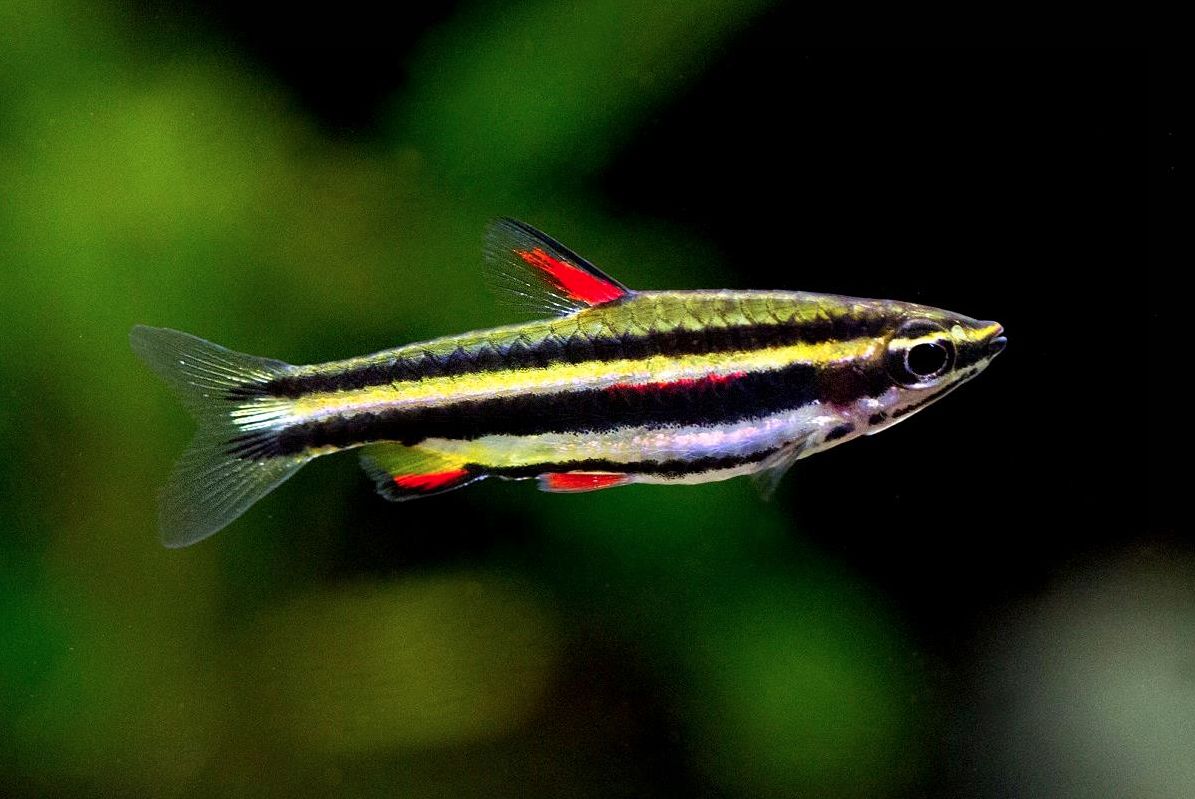
Contents
Habitat in the wild
The dwarf pencilfish (Nannostomus marginatus) belongs to the family Lebiasinidae, also known as the Pencilfish family. The Lebiasinidae family includes several species of small, slender-bodied fish found in South America, particularly in the Amazon Basin and Orinoco River basins. These fish are known for their peaceful nature, colorful appearance, and pencil-like shape, which gives them their common name.
Some other notable members of the Lebiasinidae family include the golden pencilfish (Nannostomus beckfordi), and the red pencilfish (Nannostomus mortenthaleri). Each species within the family may have its own unique characteristics, care requirements, and habitat preferences, but they share certain similarities in terms of body shape, behavior, and natural habitat.
Nannostomus marginatus was brought to Europe in 1928, and due to their tiny size, they were named dwarf pencilfish right away.
The dwarf pencilfish (Nannostomus marginatus) is a small fish native to the Amazon Basin in South America. The fish habitat is in Suriname and Essequibo (Guyana) Rivers basin. There they dwell in small rivers and streams branching from the main riverbed, the water in them is dark due to a large number of fallen leaves and plants in it.
The natural habitat of dwarf pencilfish is characterized by densely vegetated areas with submerged branches, tree roots, and leaf litter. These fish are commonly found in areas with low light levels due to the dense canopy of overhanging vegetation. The tannins released from decaying plant matter in the water create a slightly acidic and tea-colored environment.
Dwarf pencilfish are known to be shoaling fish, meaning they prefer to live in groups or schools. They rely on their shoaling behavior for safety and social interaction. Being relatively small, they navigate through the intricate vegetation and seek shelter among submerged roots, floating plants, and dense vegetation to avoid predators and find food.
Their natural diet consists of small invertebrates, such as insects, insect larvae, small crustaceans, and zooplankton. They are opportunistic feeders and will also consume plant matter and microorganisms found in their environment.
Description
Nannostomus genus (from the Greek: nanos (small), and the Latin stomus (relating to the mouth); from the Latin: marginatus (marginated)), includes about 15 fish kinds with similar shape and coloring (for example, Beckford’s pencilfish). Nannostomus distinctive feature is the absence of a fatty fin.
Nannostomus marginatus is one of the smallest and the most awesome representatives of the kind. Dwarf pencilfish are small fish with an average size of about 1 inch (2.5 cm) in length. However, they can grow up to around 1.5 inches (3.8 cm) in some cases. The size of individual fish can vary slightly, with males tending to be slightly larger and more elongated than females. These compact dimensions make dwarf pencilfish suitable for smaller aquarium setups and allow them to thrive in shoaling behavior within a limited space.
The average lifespan of Nannostomus marginatus is typically around 3 to 5 years. Regular monitoring of their health, prompt response to any signs of illness, and adherence to good aquarium practices can help maximize their lifespan.
It has a slim, spindle-shaped, elongated body, small mouth, and quite large eyes. It has a transparent tail fin. Its unpaired fins, except for the tail one, are more or less red-colored with dark edges. Abdominal fins are red, and pectoral ones are transparent; the tail fin has some grayish tint with rounded edges and not deep indentation. The fish doesn’t have a fatty fin.
An interesting feature of Nannostomus marginatus is its night coloring. In some species, the latter differs dramatically from their day coloring, and it may surprise an inexperienced observer.
The fish stripes just get paler at night, and the central stripe becomes dashed instead of the full line. It is interesting to note that the female demonstrates coloring similar to the night one at the day as well. This happens in response to the male’s attention if she isn’t ready to spawning yet. After this, the male becomes more patient and waits till the female is ready. This way, she at least partially escapes the unwanted attention.
| Characteristic | Description |
|---|---|
| Scientific Name | Nannostomus marginatus |
| Common Name | Dwarf Pencilfish, marginatus pencilfis |
| Family | Lebiasinidae |
| Origin | South America (Amazon Basin) |
| Size | Up to 1.5 inches (3.8 cm) |
| Lifespan | 3-5 years |
| Temperament | Peaceful, shoaling fish |
| Tank Size | 10 gallons (38 liters) or larger |
| Water Parameters | pH 6.0-7.0, temperature 75-82°F (24-28°C) |
| Tank Level | Middle to upper levels of the tank |
| Diet | Omnivorous, primarily small invertebrates and zooplankton in the wild. In captivity, they accept a variety of foods, including flakes, pellets, and live/frozen foods. |
| Compatibility | Peaceful community fish, best kept with other small, peaceful species |
| Behavior | Shoaling, active, and inquisitive |
| Sexual Dimorphism | Males are generally more colorful, with elongated dorsal and anal fins compared to females |
| Breeding | Egg scatterers, require soft and acidic water for successful breeding |
| Special Considerations | Prefer well-planted tanks with hiding spots and subdued lighting. Can be sensitive to water quality, so regular monitoring and maintenance are important. |
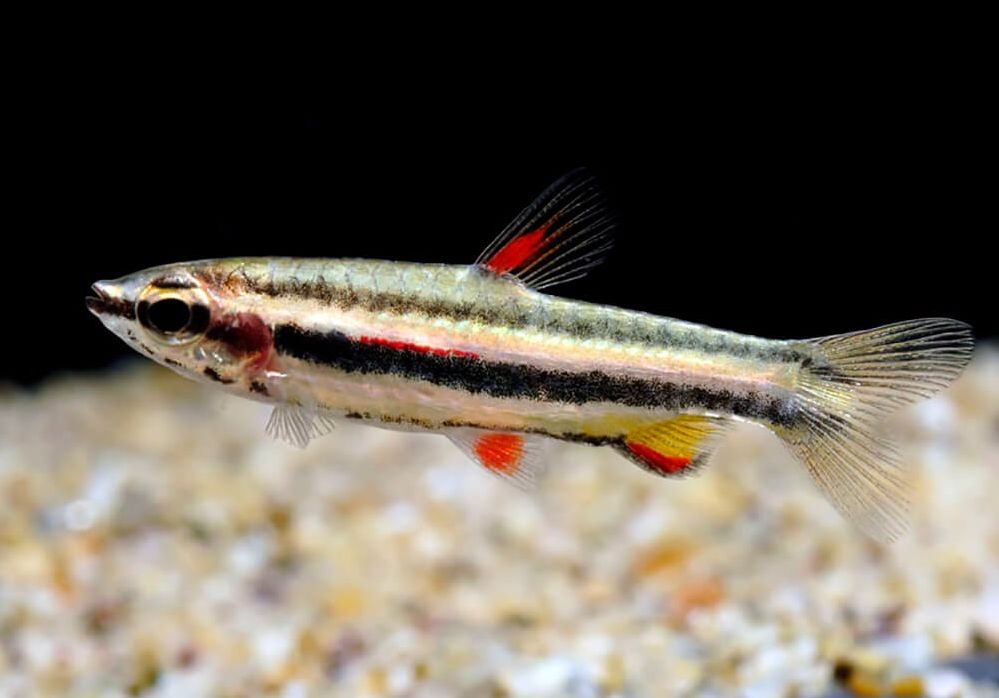
Difficulties in keeping
Dwarf pencilfish has gained aquarists’ hearts from the very beginning. The reason was its coloring, peaceful temper, tiny size, relative plainness of keeping and breeding. Nano aquarium fans often face the problem of finding proper dwellers for their small tanks. This is when the representatives of Nannostomus kind are one of the first candidates to become nano tanks dwellers. This is because the size of the most kind’s representatives is barely 3 cm; therefore, even if keeping the fish school, a small-sized tank will be enough for many of its kinds.
You should keep in mind that the fish is rather resistant to many illnesses, but it is quite sensitive to abrupt changes in water parameters. Thus, you mustn’t put newly bought fish into a new tank since the chances are high that they die. To avoid this, you should ensure they adapt to new tank conditions.
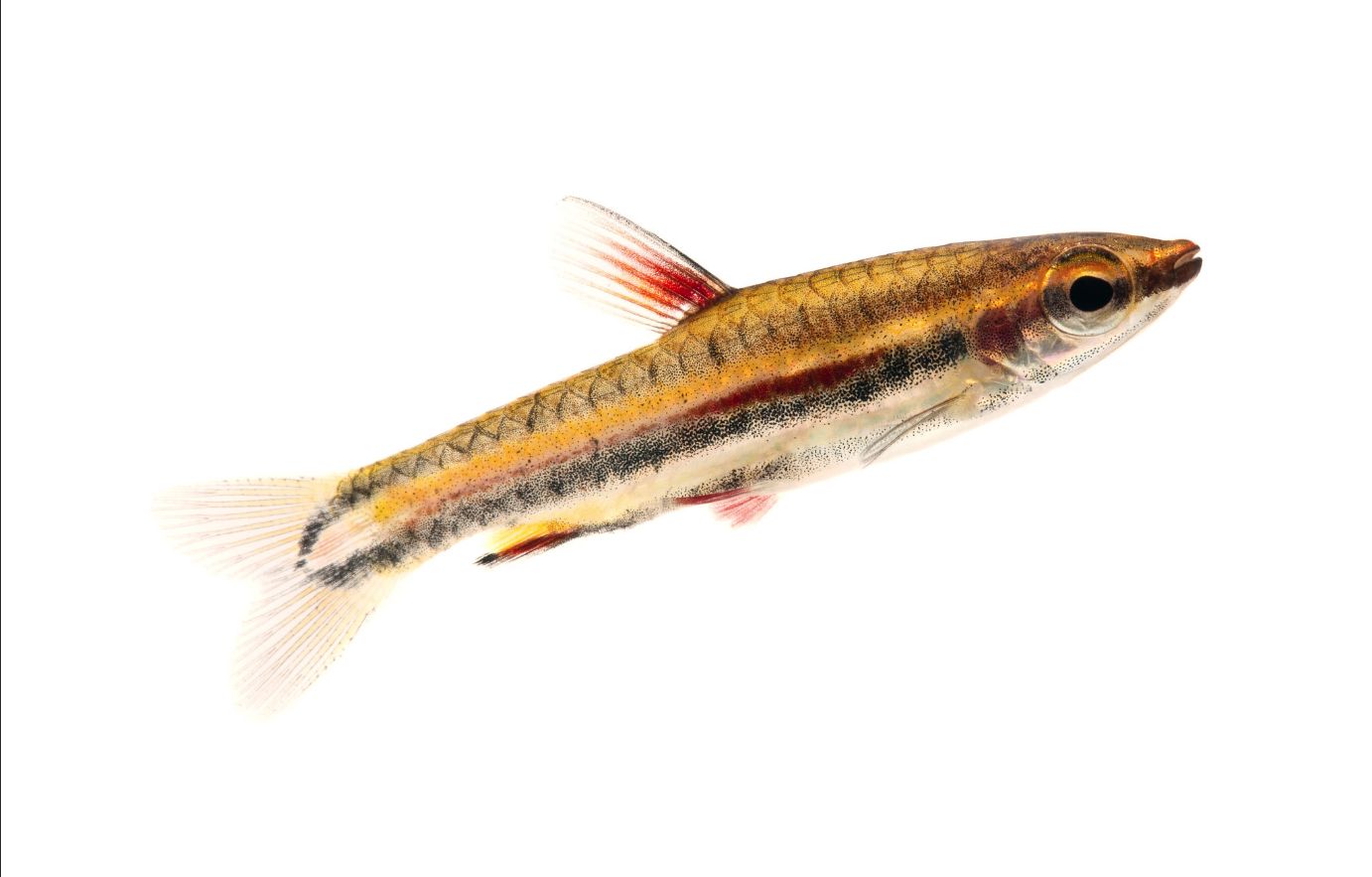
Care and keeping in a tank
Tank size
To keep a small school of dwarf pencilfishes, a small-sized tank of about 10 gallons (38 liters) capacity (4,4 gallons), but larger volume is desirable since this is a schooling fish. A larger tank size, such as a 20-gallon (76 liters) tank or larger, would be even better, especially if you plan to keep a group of dwarf pencilfish. These fish are social and thrive when kept in groups or schools. A larger tank also provides more surface area for beneficial bacteria to establish and helps maintain stable water parameters. The fish looks most appealing in a large group.
Water parameters
Tank water parameters don’t play any significant role, and it is enough to fill the tank with tap water free from chlorine and salts of heavy metals. You can get such water by using any water conditioner on sale. After using the conditioner, there is no need to settle the water.
The optimal tank water temperature is about 23—26°C (73,4-78,8 °F), pH should be within the range from 4 to 7 (optimal value is 6-6,8), and the hardness should be up to 15 dGH (optimal value is 8 dGH).
Despite the fact that wild dwarf pencilfishes dwell in soft waters, but in a tank, they easily adapt to hard and sometimes very hard water. This is true about keeping the fish. For the normal development of its eggs, soft water is a must.
Tank setup: decorations and plants
The tank bottom should better be dark-colored and moderately planted with enough free space for the fish to swim. In natural biotopes, dwarf pencilfishes gather in small groups near the shore among thickly growing aquatic flora. In tanks, they prefer similar conditions. Therefore the tank should be planted with thin-leaved tank plants. Most of its time, the fish spend among the plants looking for food. You can often see them feeding near stones with algae fouling.
Filtration
They like clean water, but due to the size, they can’t stand strong water flow. Using canister filters is preferable, and you can direct the flow so it won’t disturb the fish. If the tank is small, you should use an internal filter.
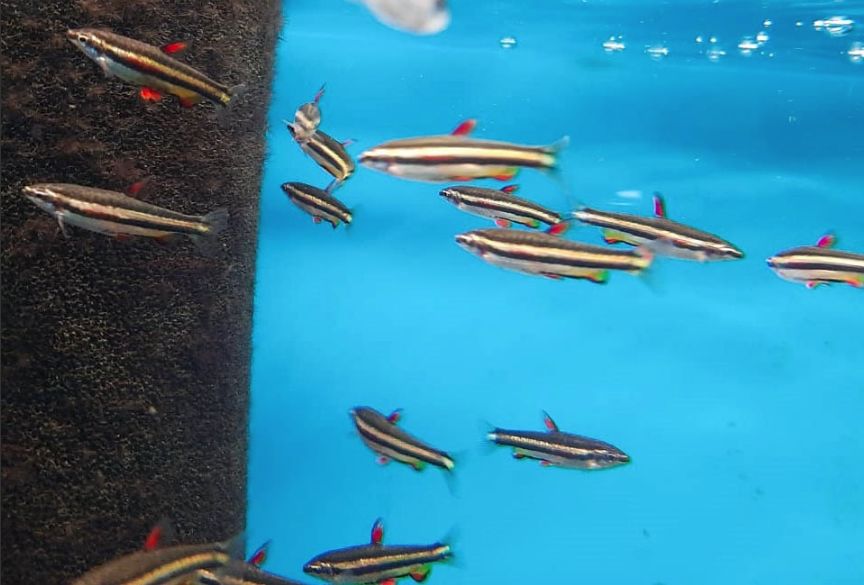
Diet
Dwarf pencilfish are omnivorous fish with a natural diet consisting of small invertebrates, such as insects, insect larvae, small crustaceans, and zooplankton. In captivity, they readily accept a variety of foods.
Dwarf pencilfish has a rather small mouth; therefore, they prefer eating different small crustaceans such as cyclopes and daphnia. They also eagerly feed on small tubifex and blood worms, both live and frozen ones. However, it’s better not to use live or frozen food since these can’t fully satisfy the fish dietary needs, and in the worst-case scenario, they may cause the fish illness.
A more suitable and convenient option is to feed dwarf pencilfish with quality artificial food with balanced nutrients, containing vitamins and additives influencing the fish coloring, digestive system, and immunity.
Tank mates
In a tank, dwarf pencilfishes stay in a group in upper and middle water layers. They move like a small torpedo. When looking for food, they often scatter around the tank, but some time later, they gather together again.
The school should consist of at least 6 species. Males will compete with each other, but this can be avoided by thickly plating the tank. In a tank, there should be fewer males than females or at least equal numbers; otherwise, the females will always be stressed. The rivalry between males and sometimes females usually limits to opening their fins and spending some time swimming side by side.
Good tank mates for marginatus are any of the related species as well as small-sized carps and catfishes.
Dwarf pencilfishes are not aggressive and join any community of small fishes. Good tank mates for them are neon tetra, black neon tetra, bloodfin tetra, cardinal tetra, rummy nose tetra, serpae tetra, white cloud mountain minnow, cherry barb, ember tetra, endler’s guppy, glowlight tetra, harlequin rasbora, platy fish. And peaceful catfishes: bristlenose pleco, glass catfish, otocinclus catfish, adolfo’s catfish, panda cory, pygmy cory, corydoras julii.
Many other tropical freshwater aquarium fishes of proper size and tank conditions will do as dwarf pencilfishes tank mates. Large fishes may start preying on them. Of course, their small size may provoke large fishes to behave like this. Dwarf pencilfish may become prey of such fishes as angelfish, large-sized gourami (kissing gourami, giant gourami), and catfishes (pictus catfish, redtail catfish, striped raphael catfish, sun catfish).
Gender differences: male vs. female
Dwarf pencilfish sex dimorphism is quite poorly visible, especially among young species. Males are a bit smaller than females, and they have more intense coloring, a slim abdomen, and a rounded anal fin. Females’ anal fin isn’t rounded, and its end is completely transparent, and it can be seen only under close examination. A reproductive female can be defined for sure by observing the males chasing her.
Females also have their black bottom lateral stripe more contrast. While males have it shorter, paler colored, and sometimes they don’t have it at all. To define the fish sex, you shouldn’t rely only on this feature since some females have the third stripe barely visible and at the same time, there are males with this stripe clearly seen.
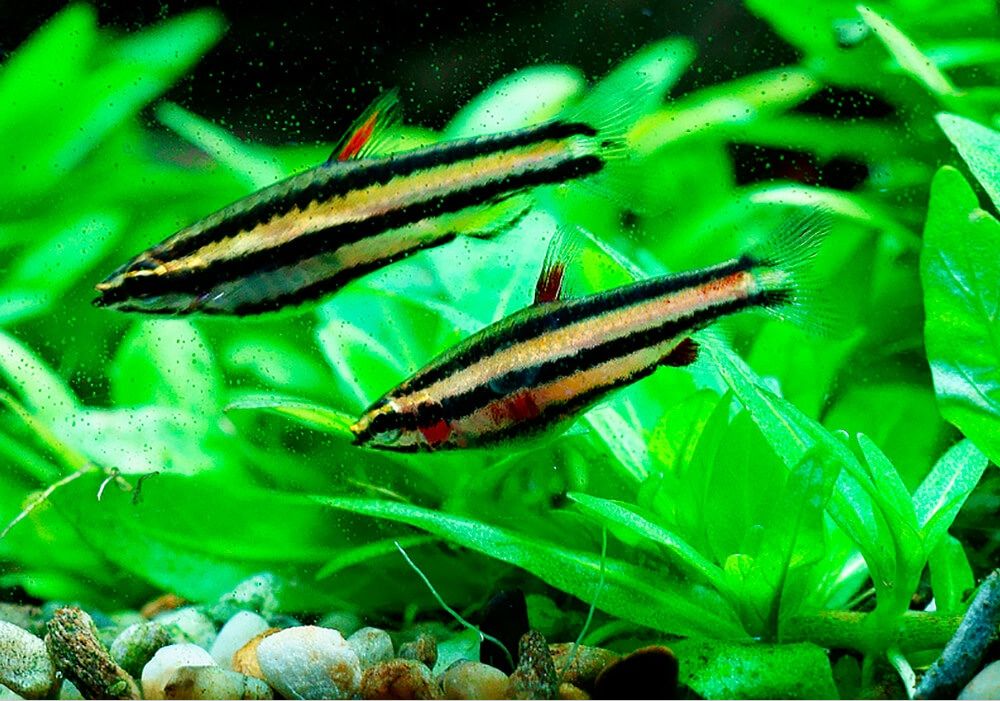
Breeding
Reproductive dwarf pencilfishes spawn all year-round. Breeding the fish is in general similar to breeding other genus representatives.
Breeding dwarf pencilfishes is challenging since they lay very few eggs and eat them rather intensively. Potentially an adult female can lay hundreds of eggs in one spawning, but in real life, at the end of the spawning, there isn’t much left from the clutch. Therefore, you’ll have to take some measures to save it.
Usually, a plastic net is used for this purpose. If you don’t have it, you can cove the tank bottom with moss (java moss) or any other that you have.
A reliable way of saving the eggs hasn’t been found yet. Therefore we manage to get about 20-30 juveniles from one couple during one spawning. Getting 40-50 juveniles is a great result.
The fish can lay eggs even in small volumes. But the smaller square of the bottom. The fewer eggs will survive since the breeders actively search for them and eat them.
During 30 minutes the eggs stay sticky and if it didn’t fall through the net but stuck to it or any other surface, it has no chances to survive.
A large square of the tank bottom due to uniform scattering of eggs allows saving maximum of them. The water level in the spawning tank shouldn’t exceed 10 cm (4 in), which allows the eggs to fall under the net before they are eaten. Tank lighting should be dim and scattered.
For spawning, dwarf pencilfishes require very soft water: hardness — 1,5—2,5 dGH, pH 5,5—6,5, temperature 26—28 °C. It is preferable to acidify the water using peat extract.
A fish couple that tried to spawn in the common tank is better to be used for spawning. It’s not a problem to find such a couple for an experienced aquarist. If they started spawning in the community tank, they would likely continue it in the spawning tank.
Or you can use a female and two males. After they form a couple, one male is removed from the tank.
Before spawning, males and females should be kept separately for 14 days provided with a diversified diet. During this time, they should adapt to soft water (by pouring it into the volume with fish in small portions).
The breeders are put for spawning in the evening, and in the morning, they usually start to lay eggs. During the spawning, the excited male actively chases the female, but he doesn’t do any harm to her. The spawning may take several days.
The female lays tiny eggs. In the water, they swell and become significantly larger. After laying the egg, the female turns to eat it right away. Males do this as well, but less often.
For this reason, once the spawning is over, you should remove the breeders from the spawning tank, then the spawning substrate and the separating net.
Depending on the water temperature, the eggs incubation time is from 30 to 50 hours. In soft water, usually on the 3rd day, the larvae hatch. Since they are afraid of light, the spawning tank should be shadowed.
The fish larvae is a small transparent ball with a tail that for two days lay on the tank bottom. On the third day, they move on the tank walls.
Unlike other fishes larvae, they start getting their coloring even at this stage of development which makes them well visible for an observer. During this time, they have a large yolk sac, feeding on which they live during the next several days. After the yolk sac is over, the larvae turn into a juvenile.
Feeding the juveniles is easy. Since they are slow-moving, the amount of food in the tank should be sufficient. The juveniles feed during the whole day, eating something from tank walls and bottom. In 3-4 days, you can add brine shrimp nauplii into their diet. In the beginning, the juveniles grow rather slowly, but once they are 1.5 cm long, they start growing faster, especially after you put them into a larger volume. By the age of 2 months, the juveniles are usually 22-25 mm long.
At the age of 3 months, you can define their sex. The females are a bit larger, and the males’ anal fin is noticeably rounded. They behave as adult fish as well.
At the age of 5-6 months, Nannostomus marginatus becomes reproductive. You can define the moment by seeing that males and females start demonstrating mutual interest.